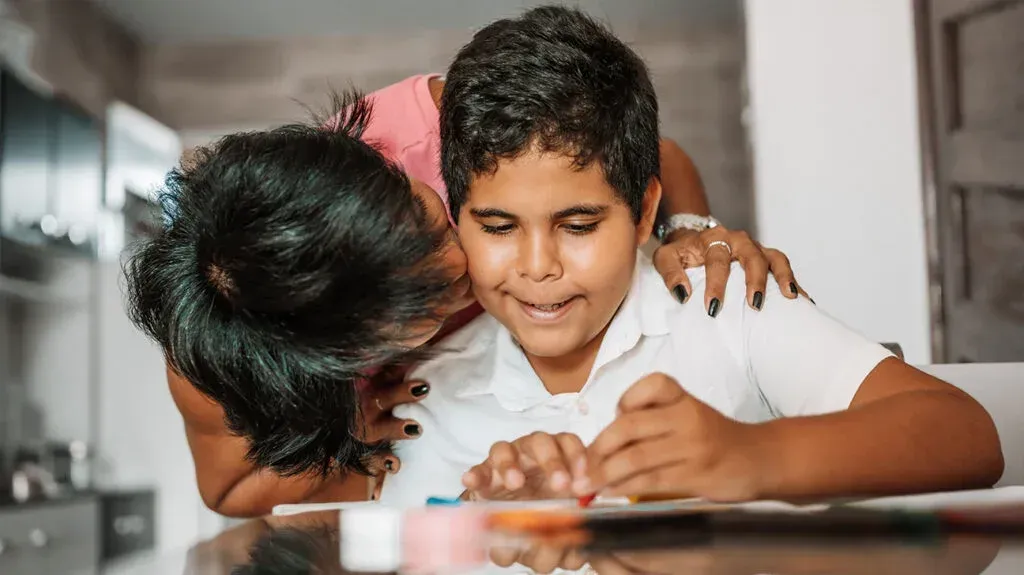Specializing in the Building of
Strong Marriages & Healthy Families
Specializing in the Building of
Strong Marriages & Healthy Families
Blog Layout
The Struggles of Feeling Misunderstood: A Look Into Life with Autism
Chantal Wohnoutka • March 28, 2025
The Struggles of Feeling Misunderstood: A Look Into Life with Autism
Chantal Wohnoutka • March 28, 2025
Learn About The Struggles of Feeling Misunderstood: Take A Look Into Life with Autism

Autism Spectrum Disorder (ASD) is a complex neurological condition that affects how individuals perceive, process, and engage with the world around them. It’s a spectrum, meaning that no two experiences are exactly alike. Some individuals may be non-verbal, others may experience heightened sensory sensitivities, and many have exceptional abilities in specific areas while facing difficulties in others.
Yet despite the diversity of experiences within the autism community, a shared challenge often emerges — the deep emotional toll of feeling misunderstood.
The Emotional Weight of Misunderstanding
For many individuals with autism, navigating a world that doesn’t seem to “get” them can be exhausting. Misinterpretations, misjudgments, and missed connections are common, and over time, these experiences can lead to frustration, anxiety, and sadness.
Social norms and expectations — things many people take for granted — can feel confusing, even overwhelming. The constant pressure to conform, to mask, or to explain oneself can chip away at self-esteem and contribute to feelings of isolation and depression.
When someone repeatedly feels “different” or “out of sync” with those around them, it can be difficult to feel a true sense of belonging. And that emotional distance can be one of the most painful aspects of living with autism.
Creating a Culture of Acceptance and Understanding
Reducing these feelings of misunderstanding starts with creating a more inclusive and empathetic society. The differences that come with autism aren’t deficits — they’re variations in how people experience and interact with the world.
Rather than trying to change or “fix” these differences, we can aim to better understand them. When we shift our perspective from judgment to curiosity, and from assumption to empathy, we open the door to deeper connections and more meaningful support.
How You Can Be More Supportive
If you’re looking for ways to better understand and support someone with autism, here are a few powerful starting points:
1) Listen with Intent
Communication may not always be verbal or follow typical patterns. Whether it’s through behavior, stimming, or alternative methods, try to understand what someone is expressing — not just how they’re expressing it. Patience and active listening go a long way.
2) Challenge Your Assumptions
Behavior is not always what it seems. If someone appears distant or unengaged, consider their sensory sensitivities, social anxiety, or need for a different communication style. The lens through which someone with autism views the world is unique — and worthy of respect.
3) Encourage Open Dialogue
If you're unsure how to support someone, just ask. Simple questions like “What makes you feel comfortable?” or “Is there a way you'd prefer to communicate?” show respect and create space for mutual understanding.
4) Educate and Advocate
The more we learn about autism, the more we can help break down harmful stereotypes and assumptions. Education fosters empathy, and empathy builds bridges that help everyone feel more connected and understood.
Embracing Differences, Celebrating Strengths
Every person is a unique individual with their own gifts, challenges, and perspectives. Autism is just one part of someone’s identity — not a definition of who they are.
Let’s shift the narrative. Instead of focusing on what’s “different,” let’s celebrate strengths, encourage authenticity, and create spaces where everyone feels safe to be themselves.
At Lighthouse Counseling LTD, we believe that every person deserves to be seen, heard, and valued — just as they are.
Primary Mailing Address: P.O. Box 655 Hutchinson, MN 55350
Hi. Do you need any help?
Privacy Policy
| Do Not Share My Information
| Conditions of Use
| Notice and Take Down Policy
| Website Accessibility Policy
© 2025
The content on this website is owned by us and our licensors. Do not copy any content (including images) without our consent.


Share On: